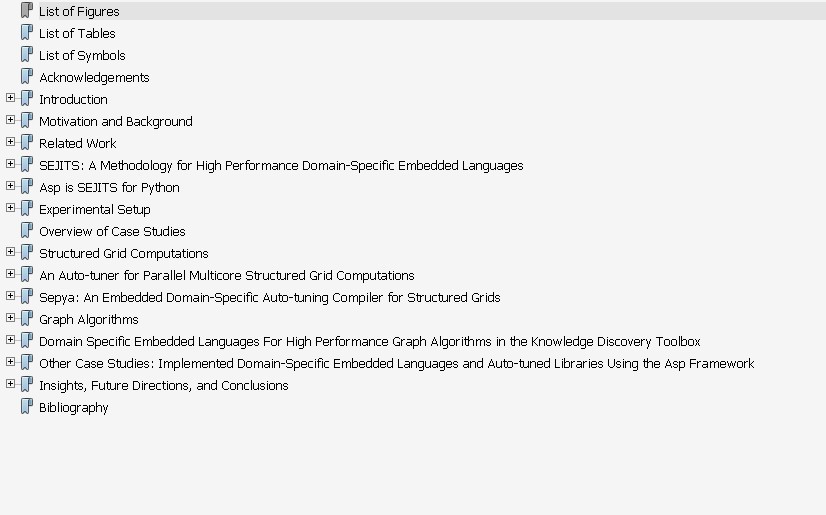关键词:复杂机器;编译器;DSELs;基础设施;SEJITS;Python;结构化网格计算
摘 要:As the complexity of machines and architectures has increased, performance tuning has become more challenging, leading to the failure of general compilers to generate the best possible optimized code. Expert performance programmers can often hand-write code that outperforms compiler-optimized low-level code by an order of magnitude. At the same time, the complexity of programs has also increased, with modern programs built on a variety of abstraction layers to manage complexity, yet these layers hinder efforts at optimization. In fact, it is common to lose one or two additional orders of magnitude in performance when going from a low-level language such as Fortran or C to a high-level language like Python, Ruby, or Matlab. General purpose compilers are limited by the inability of program analysis to determine programmer intent, as well as the lack of detailed performance models that always determine the best executable code for a given computation and architecture. The latter problem can be mitigated through auto-tuning, which generates many code variants for a particular problem and empirically determines which performs best on a given architecture. This thesis addresses the problem of how to write programs at a high level while obtaining the performance of code written by performance experts at the low level. To do so, we build domain-specific embedded languages that generate low-level parallel code from a high-level language, and then use auto-tuning to determine the best performing low-level code. Such DSELs avoid analysis by restricting the domain while ensuring programmers specify high-level intent, and by performing empirical auto-tuning instead of modeling machine parameters. As a result, programmers write in high-level languages with portions of their code using DSELs, yet obtain performance equivalent to the best hand-optimized low-level code, across many architectures. We present a methodology for building such auto-tuned DSELs, as well as a software infrastructure and example DSELs using the infrastructure, including a DSEL for structured grid computations and two DSELs for graph algorithms. The structured grid DSEL obtains over 80% of peak performance for a variety of benchmark kernels across different architectures, while the graph algorithm DSELs mitigate all performance loss due to using a high-level language. Overall, the methodology, infrastructure, and example DSELs point to a promising new direction for obtaining high performance while programming in a high-level language.
目 录:
